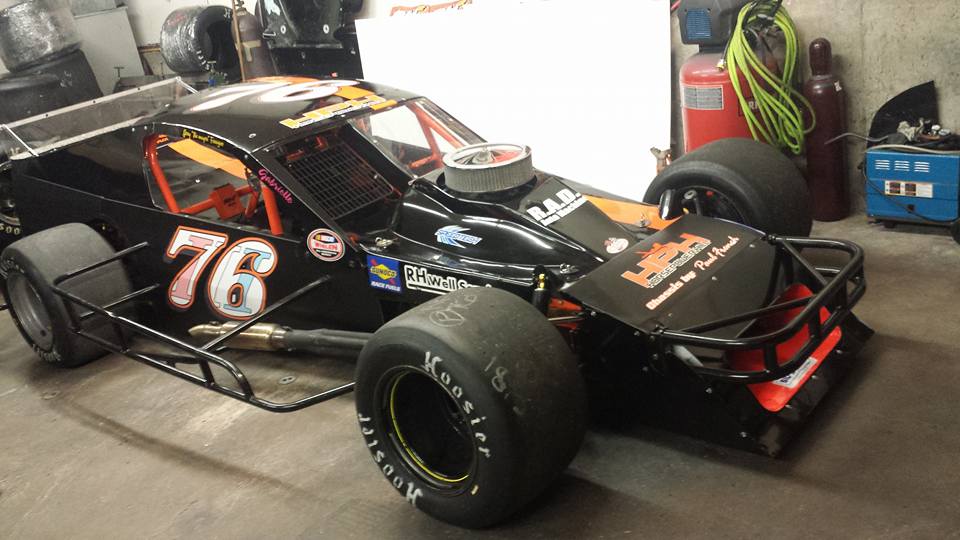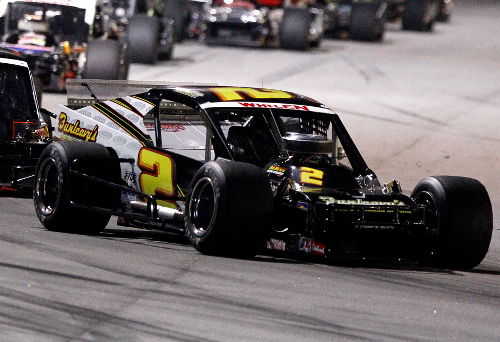AndyMarquisLive
I love short track racing (Taylor's Version)
Something that is really beginning to grind my gears about short track racing is how many tracks have so many different classes of the same cars. And how now, the support classes run bodies identical to the Late Model class and there is no visible difference to the fans in the stands.
Let's look at Bowman Gray for instance. They have a Sportsman (Limited Late Model) and a Street Stock class. But now, the Street Stocks run Late Model bodies and I've seen some of those Street Stocks run Late Model races elsewhere and win races. So, the Street Stock division at Bowman Gray is now exactly the same as the Sportsman division.
Southern National Motorsports Park has Late Model Stock and Charger. The Charger division now runs tube chassis and Late Model bodies, along with Late Model engines. The Late Model class gets 12 cars and the Charger class gets eight cars -- but six of those eight cars are, for all intents and purposes, Late Models.
Then, I saw this picture of a Mini Stock that races at Motor Mile Speedway.

So now, the Mini Stock class runs Late Model bodies too and the only discernible differences between Late Models and Mini Stocks are the tire sizes and the motors.
Plus, Langley Speedway has a Pro-6 division that runs Late Model bodies.
So, let's summarize what divisions have cars that are almost exactly the same:
Late Model Stock Car, Limited Late Model/Sportsman, Charger and Street Stock.
Then, you have the following classes that aren't Late Models but run Late Model bodies:
Mini Stock (four cylinder), Pro-6.
But wait, there's more.
Some tracks have two and even three classes of Street Stocks. So, the identity crisis gets even more profound.
For all intents and purposes, almost all these cars are the exact same now. But they run different classes where there are small differences. Limiteds, for instance, run smaller carbs. Street Stocks might put a restrictor plate on a Late Model engine. Chargers, there's a carb rule and a tire rule and some other small, minor, insignificant changes.
So, when someone runs Late Models and runs in the back, they can step down to a lower class with the same exact car and start winning races. Which ends up resulting in the fans showing up and seeing three or four classes of Late Models racing, all with seven or eight cars, and get completely turned off to it.
And the tracks can't really step in and intervene because car counts are so low, they're afraid that, if they do something about it, they'll run cars off.
Short track racing has an identity crisis here.
Let's look at Bowman Gray for instance. They have a Sportsman (Limited Late Model) and a Street Stock class. But now, the Street Stocks run Late Model bodies and I've seen some of those Street Stocks run Late Model races elsewhere and win races. So, the Street Stock division at Bowman Gray is now exactly the same as the Sportsman division.
Southern National Motorsports Park has Late Model Stock and Charger. The Charger division now runs tube chassis and Late Model bodies, along with Late Model engines. The Late Model class gets 12 cars and the Charger class gets eight cars -- but six of those eight cars are, for all intents and purposes, Late Models.
Then, I saw this picture of a Mini Stock that races at Motor Mile Speedway.
So now, the Mini Stock class runs Late Model bodies too and the only discernible differences between Late Models and Mini Stocks are the tire sizes and the motors.
Plus, Langley Speedway has a Pro-6 division that runs Late Model bodies.
So, let's summarize what divisions have cars that are almost exactly the same:
Late Model Stock Car, Limited Late Model/Sportsman, Charger and Street Stock.
Then, you have the following classes that aren't Late Models but run Late Model bodies:
Mini Stock (four cylinder), Pro-6.
But wait, there's more.
Some tracks have two and even three classes of Street Stocks. So, the identity crisis gets even more profound.
For all intents and purposes, almost all these cars are the exact same now. But they run different classes where there are small differences. Limiteds, for instance, run smaller carbs. Street Stocks might put a restrictor plate on a Late Model engine. Chargers, there's a carb rule and a tire rule and some other small, minor, insignificant changes.
So, when someone runs Late Models and runs in the back, they can step down to a lower class with the same exact car and start winning races. Which ends up resulting in the fans showing up and seeing three or four classes of Late Models racing, all with seven or eight cars, and get completely turned off to it.
And the tracks can't really step in and intervene because car counts are so low, they're afraid that, if they do something about it, they'll run cars off.
Short track racing has an identity crisis here.




